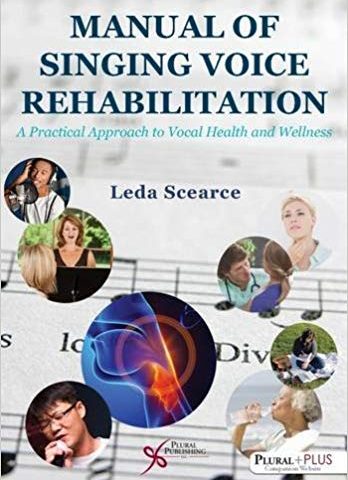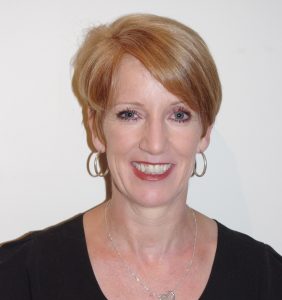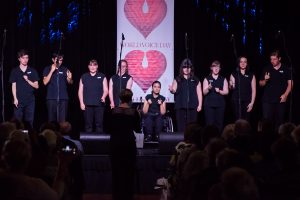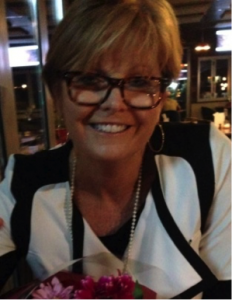 What is Vocal Massage and could it be helpful for patients with Voice Disorders?
What is Vocal Massage and could it be helpful for patients with Voice Disorders?
Vocal massage is designed to give a ‘reset’ of the muscles involved in posture and vocalization to help maintain (or help re-establish) healthy voice production. It is also increasingly being investigated as a way to decrease pain and tension from excessive contraction of the extrinsic muscles of the larynx (as found in voice disorders such as Muscle Tension Dysphonia) (Dehqan & Scherer, 2008). Vocal Massage is also starting to be used as part of a holistic treatment plan established by an ENT and Speech Pathologist by Voice centres such as the Cleveland Clinic, Vanderbilt Voice Clinic, and the Royal Throat, Nose and Ear Hospital in London.
A way to improve posture and prevent vocal problems
Singing and speaking well require a freedom and balance in the muscles around the larynx and jaw and a buoyant, free posture for the breath. A number of articles have illuminated the way in which good posture, particularly of the cervical spine, is directly related to higher levels of vocal resonance and pitch control (Arboleda & Frederick, 2008). Cardoso, Lumini-Oliveira, and Meneses (2017) have proven an effective posture allows a subject to more easily shift the tension between muscles, allowing for a free movement of the larynx without blockages and with benefits to voice production. In a study by Kooijman (2005), muscular tension and body posture were assessed in relation to voice handicap and voice quality in teachers with persistent voice complaints- the conclusion was the combination of hypertonicity of the sternocleidomastoid, the geniohyoid muscles and posterior weight bearing…[were] the most important predictor for a high voice handicap. Manual bodywork such as Vocal massage combined with rehabilitative exercises may be the way forward in helping some patients recover from a vocal disorder by addressing the body patterns contributing to the tightness in these muscles. Unfortunately, comprehensive studies on the long-term benefits of this have not yet been undertaken.
A Vocal Massage Session
The first component of a Vocal Massage is postural assessment and palpation of the area around the neck and jaw to establish if restrictions in the muscles may be affecting the patient’s ability to supply breath efficiently to the voice and vocalize well. The larynx and hyoid bone are gently assessed to establish if they are in a free, neutral position, range of motion of the jaw and head will be tested, and the therapist will check if the ribs and diaphragm are mobile and the posture is balanced. A treatment plan is then developed specific to the patient’s needs, which may include alleviating tension around the front of the neck and jaw, mobilizing the hyoid bone and larynx and addressing postural issues affecting the freedom of the breath. Myofascial techniques are used which include gentle tractioning of the muscles, trigger point work and stretches that may help reduce tension in the muscles.
May help improve respiratory function
We know that manual therapy appears to increase the respiratory function of normal individuals (Engel & Vemulpad, 2007), but more research needs to be undertaken to see if manual therapy could be helpful to those with inhibited respiratory function and voice disorders (da Cunha Pereira, de Oliveira Lemos, Gadenz, Cassol, 2017). Anecdotally many of my clients have found massage helpful after a respiratory illness such as a cough to alleviate tension and stiffness around the larynx and have found their voice more resonant and responsive after the massage session. Myofascial release techniques in this instance are used on the sternocleidomastoid and scalene muscles combined with gentle mobilization of the intercostal muscles, diaphragm attachment points and the ribcage to help free the breathing mechanism.
Countering the physical demands of workplaces- particularly for stage performers
Stage workplaces major demands on a singer’s body. Raked stages, very heavy or tight costumes, wigs, hats and high heels can all throw the alignment of the posture out and tense muscles involved in vocalisation. It can also mean the singer adjusts the position of their pelvis and neck. These adjustments may affect the singer’s capability for full breath capacity and best breath management (Staes, et al., 2011). Vocal massage used as a preventative measure to help a build-up of tension may help bring more balance back to the body and keep a voice fresh and healthy.
A study examining the effectiveness of Vocal Massage in relation to Reflux
While much more research needs to be undertaken, in a recent study by Gaelyn Garrett, M.D., and Duke researcher Seth Cohen, M.D. at the Vanderbilt Voice Institute (Cohen & Garrett, 2008) it was found that around 67 per cent of patients who had hoarseness over a six-month period were either on reflux medication or had been prescribed reflux medication without improvement. Two-thirds of those patients improved with specialized manual therapy aimed at muscle tightness of the neck and throat. “Medical Director Gaelyn Garrett, M.D., and her staff of speech-language pathologists had previously treated the condition with voice therapy alone for the muscles around the larynx, which include the swallowing muscles. Some patients, however, did not respond to only doing voice therapy.” “In these people who weren’t responding, we started asking a lot of questions about their daily habits and we started realizing that people talk on the phone and it affects their posture; people are at a computer and it affects their posture,” Garrett said. It was also found that typically these patients had experienced some kind of physical or emotional trauma which had begun a process of excess tension throughout the body “… they were in a car wreck, they went through a divorce, they had back surgery” (Cohen & Garrett, 2008). Cohen and Garrett (2008) report how a more holistic view revealed other causes of tension: “And you start asking people, too, about where they focus stress and if they have any cervical spine issues, neck or shoulder issues, tension headaches. It all fell in place that if we address this whole musculoskeletal area, from the backup, it would help patients relax their voice,” she said. In conclusion, while anecdotally vocal massage helps certain patients and small studies have proven its effectiveness (Rubin, Lieberman, & Harris, 2000), more comprehensive studies are needed to establish the long-term effects and benefits, the type of patient it might help and how it might be best implemented in a multidisciplinary setting.
References
Arboleda, B. M. W., & Frederick, A. L. (2008). Considerations for maintenance of postural alignment for voice production. Journal of Voice, 22(1), 90-99.
Cardoso, R., Lumini-Oliveira, J., & Meneses, R. F. (2017). Associations between Posture, Voice, and Dysphonia: A Systematic Review. Journal of Voice.
Cohen, S. M., & Garrett, C. G. (2008). Hoarseness: is it really laryngopharyngeal reflux? The Laryngoscope, 118(2), 363-366.
da Cunha Pereira, G., de Oliveira Lemos, I., Gadenz, C. D., & Cassol, M. (2017). Effects of voice therapy on muscle tension dysphonia: a systematic literature review. Journal of Voice.
Dehqan, A., & Scherer, R. C. (2018). Positive Effects of Manual Circumlaryngeal Therapy in the Treatment of Muscle Tension Dysphonia (MTD): Long Term Treatment Outcomes. Journal of Voice.
Engel, R. M., & Vemulpad, S. (2007). The effect of combining manual therapy with exercise on the respiratory function of normal individuals: a randomized control trial. Journal of Manipulative and Physiological Therapeutics, 30(7), 509-513.
Kooijman, P. G. C., De Jong, F. I. C. R. S., Oudes, M. J., Huinck, W., Van Acht, H., & Graamans, K. (2005). Muscular tension and body posture in relation to voice handicap and voice quality in teachers with persistent voice complaints. Folia Phoniatrica et Logopaedica, 57(3), 134-147.
Rubin, J. S., Lieberman, J., & Harris, T. M. (2000). Laryngeal manipulation. Otolaryngologic Clinics of North America, 33(5), 1017-1034.
Staes, F. F., Jansen, L., Vilette, A., Coveliers, Y., Daniels, K., & Decoster, W. (2011). Physical therapy as a means to optimize posture and voice parameters in student classical singers: a case report. Journal of Voice, 25(3), e91-e101.
To contact Rachael about Vocal Massage please email her at rachael@vocalease.com.au
Rachael Cunningham is a Vocal Massage Therapist in Sydney. She is a qualified Remedial Massage therapist and has undertaken extensive training in myofascial techniques for the Neck, Jaw and Head and Vocal Massage. Rachael is also very aware of demands placed upon singers in the performing arts as she has sung in the chorus of Opera Australia for the past 20 years. Currently she is performing in Aida at the Sydney Opera House and is about to travel to China to tour with Madama Butterfly. Her website is www.vocaleasemassage.com.au
“Unless stated otherwise, this article represents only the views of the author and not the views of the AVA”



 The Australian Voice Association
The Australian Voice Association
 Healing Voices
Healing Voices






